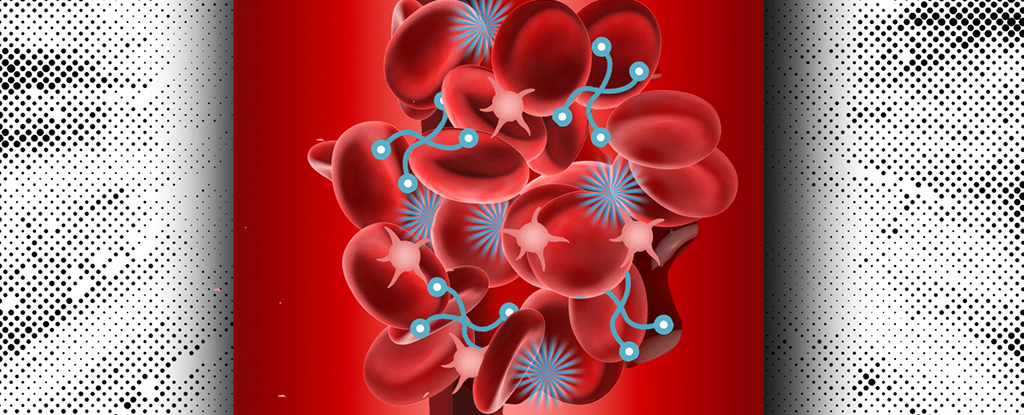

Blood clots are a vital defense mechanism in the body that helps to stop bleeding and keep us alive. However, if the body is losing a lot of blood, the clotting process may not be sufficient. Researchers have developed a new synthetic replacement system that targets internal injuries without causing any damage of its own.
The synthetic system comprises two components designed to match the body’s platelets and fibrinogen. The first component is a biocompatible polymer nanoparticle called PEG-PLGA that binds to platelets at the site of the injury. The second component takes the place of fibrinogen and creates clumps through a reaction with the nanoparticles. The researchers designed the particles to crosslink only at a high enough concentration, preventing them from accumulating in the wrong spots.
The synthetic system has been tested on mice and was found to trigger the blood clotting process effectively, proving significantly better at stopping bleeding than previous methods. The system also lasted longer than normal blood clots and did not cause any unwanted immune system reactions in the animals. The next stage is a larger mouse model trial to test the system further.
Blood loss from traumatic events, such as car crashes, claims millions of lives per year. With internal bleeding, it can be challenging to identify what is happening and where. The new synthetic system would automatically target the site of the problem and provide some help for the body until more comprehensive medical assistance can be given. All that would be required is an injection that first responders could provide. With further testing, the system could even help medical professionals identify where internal bleeding is happening much more quickly and without expensive or complex equipment.
The two-component synthetic blood clotting system has the potential to save millions of lives by stopping bleeding more effectively than current methods. The system has been tested on mice and has proven highly effective, lasting longer than normal blood clots and not causing any unwanted immune system reactions. The next stage is a larger mouse model trial, and if successful, the system could be used by first responders to stop bleeding until more comprehensive medical assistance can be given. The system could also help medical professionals identify where internal bleeding is happening more quickly and without expensive or complex equipment.
Cells form the foundation of all living organisms, and gaining insights into their inner workings…
Mosquitoes are not just an irritating nuisance; they are deadly vectors that transmit a range…
In the quest for sustainable living, consumers often hold fast to the belief that glass…
For over a century, the astral mystery surrounding Barnard's Star, a unique red dwarf just…
In the realm of catalysis, particularly in the context of oxygen evolution reactions (OER), understanding…
Recent research has illuminated a groundbreaking connection between blood donation frequency and the health of…
This website uses cookies.